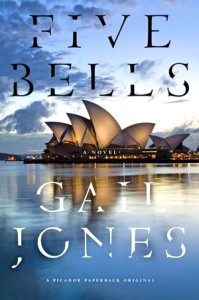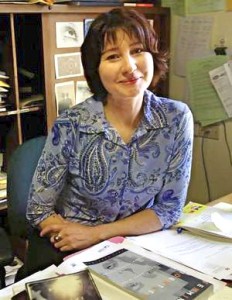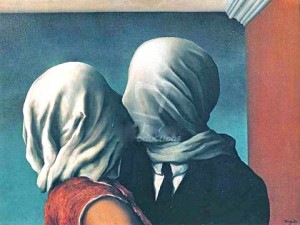Note: This novel has been shortlisted for the Victorian Premier’s Award for Fiction and the Adelaide Festival Award for Literature.
“Circular Quay. [Ellie] loved even the sound of it. Before she saw the bowl of bright water, swelling like something sexual, before she saw the blue, unprecedented, and the clear sky sloping upwards, she knew from the lilted words it would be a circle like no other, key to a new world.”—Ellie, at the Opera House in Sydney
I n lush and often lyrical language, author Gail Jones creates a consummately literary novel which takes place on Circular Quay, surrounding the Opera House, during one hot summer day in Sydney. Four major characters are dealing with personal losses and memories of the past which make it difficult, if not impossible, for them to participate fully in the present. Deaths haunt them all, and as they gravitate individually towards the Opera House, they relive events from their lives. Time is relative as the novel moves forward and then swirls backward during each character’s reminiscences. Only Ellie and James know each other. The other characters lead independent lives, and any connection among them will be just a glancing blow, a random event – one of the minor acts of fate. A mysterious fifth character, who materializes without warning in the conclusion, serves as a catalyst to bring the novel to its thematic conclusion.
n lush and often lyrical language, author Gail Jones creates a consummately literary novel which takes place on Circular Quay, surrounding the Opera House, during one hot summer day in Sydney. Four major characters are dealing with personal losses and memories of the past which make it difficult, if not impossible, for them to participate fully in the present. Deaths haunt them all, and as they gravitate individually towards the Opera House, they relive events from their lives. Time is relative as the novel moves forward and then swirls backward during each character’s reminiscences. Only Ellie and James know each other. The other characters lead independent lives, and any connection among them will be just a glancing blow, a random event – one of the minor acts of fate. A mysterious fifth character, who materializes without warning in the conclusion, serves as a catalyst to bring the novel to its thematic conclusion.
Ellie, the first of the characters, is a small town girl who has lived in the countryside for all of her thirty-four years. She has come into the city to reconnect with James DeMello, the love of her life, who has contacted her recently after a twenty year hiatus. Ellie, who has been living in the Sydney area for only six weeks, is taking advantage of new opportunities, having returned to university, where she studies during the day and works as a waitress at night. Her “trampoline heart” reacts to all the new sights and sounds ar ound her, and she sees the Opera House as “moon-white and [holding] within it a great, serious stillness. The fan of its chambers leant together, inclining to the water. An unfolding thing, shutters, a sequence of sorts…And that shape of supplication, like a body bending into the abstraction of a low bow or a theological gesture.” She and James had been innocent teenagers exploring their bodies in a secret hideout for an entire year, until James went away to school, and she is excited about seeing him again. As Ellie remembers the past, she also remembers being a kind of anchor for James, whose family life was a disaster.
ound her, and she sees the Opera House as “moon-white and [holding] within it a great, serious stillness. The fan of its chambers leant together, inclining to the water. An unfolding thing, shutters, a sequence of sorts…And that shape of supplication, like a body bending into the abstraction of a low bow or a theological gesture.” She and James had been innocent teenagers exploring their bodies in a secret hideout for an entire year, until James went away to school, and she is excited about seeing him again. As Ellie remembers the past, she also remembers being a kind of anchor for James, whose family life was a disaster.
James DeMello, who became her lover when they were both fourteen, will be meeting her later that day. James abandoned his medical school studies after just one year, and he secretly dreams of the artistic life, especially that of Rene Magritte, who also suffered from the loss of his mother. James believing himself “destined for mediocrity,” however, goes on to become, not an artist, but a much-respected teacher – until a terrible accident occurs, for which he still blames himself. His life has been hard and his grip on reality is precarious.
 Catherine Healy, from Ballymun, Ireland, has been in Sydney only two weeks. A journalist who has come to Sydney from Paris to find work, Catherine has left her lover Luc behind in Paris. The ghost of her much-loved brother Brendan has prevented her from fully participating in life since his death in an accident several years ago. Veronica Guerin, the iconic Irish reporter who was gunned down by drug lords in Dublin in 1996, has always been her idol, and it was Guerin’s death which led Catherine to leave Ireland for Paris. There, she met Luc, a translator from Russian to French, whose love she cannot fully return because of her obsessive love of family, especially of her brother. Her trip to Australia is a test of her independence.
Catherine Healy, from Ballymun, Ireland, has been in Sydney only two weeks. A journalist who has come to Sydney from Paris to find work, Catherine has left her lover Luc behind in Paris. The ghost of her much-loved brother Brendan has prevented her from fully participating in life since his death in an accident several years ago. Veronica Guerin, the iconic Irish reporter who was gunned down by drug lords in Dublin in 1996, has always been her idol, and it was Guerin’s death which led Catherine to leave Ireland for Paris. There, she met Luc, a translator from Russian to French, whose love she cannot fully return because of her obsessive love of family, especially of her brother. Her trip to Australia is a test of her independence.
The fourth character, Pei Xing, a widow in her sixties, has come to Australia from mainland China, having survived the Cultural Revolution which killed her parents and forced her to endure torture and a terrible prison term. Every Saturday she comes into Sydney to pay a visit to a stroke victim. The most selfless of the characters, Pei Xing suggests that we are all imprisoned primarily within ourselves. Her memories of her father, a scholar/translator of Russian literature, has imbued her with a love of literature, and her marriage to Wang Xun and his loss has left her with an understanding of the fragility of life and love.

Literary and artistic references pepper the narrative, adding depth to the themes of love, loss, and death. Artist Rene Magritte, James DeMello’s favorite artist, has painted “The Lovers,” which James particularly likes, and Man Ray and Lee Miller, have created a surrealistic painting also called “The Lovers,” which springs to mind when James thinks of Ellie. James’s father, upon his death, resembles a Giacometti sculpture to James; James Joyce’s “The Dead,” is read at Catherine’s brother Brendan’s funeral; Gogol’s story of “The Overcoat” parallels in some ways the new red coat that Pei Xing has received from her family; and Pei Xing’s father’s translation of Dr. Zhivago, a book she reads aloud to someone she visits, echoes throughout the action. Ezra Pound and the Australian poet Kenneth Slessor, whose poem “Five Bells” introduces the action, add to the literary density. Images of snow, which are called to mind by Catherine, Pei Xing, and James; along with images of the stars, bridges, birds, water, and the clepsydra, a water clock in which time is measured by the passage of liquid from one vessel to another, add to the thematic density.
 Though some will find this novel a literary treat, others may question its structure. With four separate characters, three of whose lives do not intersect in any significant way, the novel is somewhat fragmented, and all the characters are not equally well developed. Ellie and Catherine are not very thoughtful, and we learn little about life from spending time with them. Why Catherine is in Sydney at all is an open question, and how much Ellie will learn about life remains in doubt. Sometimes the prose is weighed down by the elaborate imagery. Still the novel offers much of interest to those who enjoy highly literary novels, and the thematic focus and the setting are unusual and intriguing.
Though some will find this novel a literary treat, others may question its structure. With four separate characters, three of whose lives do not intersect in any significant way, the novel is somewhat fragmented, and all the characters are not equally well developed. Ellie and Catherine are not very thoughtful, and we learn little about life from spending time with them. Why Catherine is in Sydney at all is an open question, and how much Ellie will learn about life remains in doubt. Sometimes the prose is weighed down by the elaborate imagery. Still the novel offers much of interest to those who enjoy highly literary novels, and the thematic focus and the setting are unusual and intriguing.
ALSO by Gail Jones: Sorry
Photos, in order: The author’s photo and an interview appear here: http://www.theage.com.au
Magritte’s “The Lovers” (1928) echoes throughout the novel: http://arthousereproductions.com.
On a later occasion, James DeMello refers to “The Lovers” by Man Ray and Lee Miller, a combination of photography and painting. http://www.pem.org/exhibitions
The role of Omar Sharif in Dr. Zhivago is considered by Pei Xing. http://www.amazon.com
